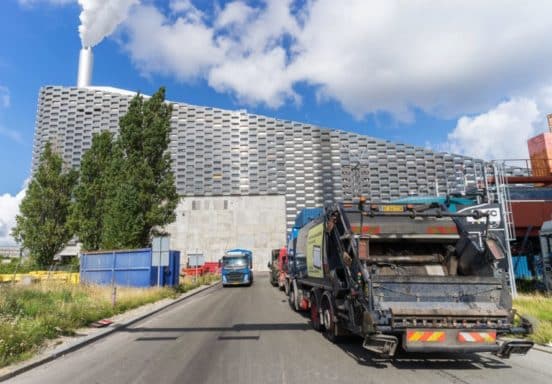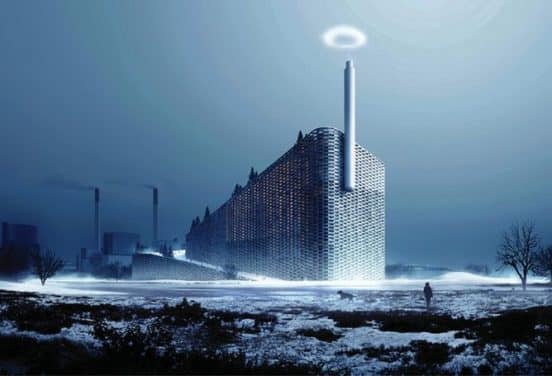Bjarke Ingels is a Danish architect with lots of nerve. The Copenhagen-based artist loves to create buildings that seem impossible, defying convention while promoting sustainable development. Ingels’ designs are always created to fit in seamlessly with their surroundings, a concept he is applying with particular gusto to his newest project: a ski slope on the side of a power plant.
If that sounds crazy to you, that’s exactly the reaction the Bjarke Ingels Group wants. The idea started six years ago, when the firm created a plan to make a huge power plant that could provide Copenhagen with all of the hot water and electricity it needed – complemented by a massive ski slope. Most people laughed at the idea, assuming it was just an attention-getting exploration of what could be possible one day. However, Ingels has proven that the project is more than a concept.
After years of construction, the power plant is almost complete. It already converts waste to energy, and by 2018 it will also be topped by 30 rooftop trees, a 600-meter ski slope and the world’s tallest climbing wall.
The plant is known as Amager Bakken and it is ambitious in its ability to provide sustainable energy. After it officially opens, it will process over 400,000 tons of waste each year, enough to power up 160,000 homes with hot water, and another 62,500 homes with electricity. Copenhagen green-lit the project, which replaces an old power plant known as the Amager Resource Center. Bakken improves upon the old plant’s performance by producing over 25% more energy. Even better, the plant reduces CO2 emissions by around 100,000 tons per year. These specs alone prove that the Bakken was not just an Ingels fantasy or vanity project.
It is here where the plant is a true achievement, since it’s literally burning trash but keeping its emissions fairly clean. Denmark has advanced filtration technology that ensures that the air near the plant is in reality cleaner than the air in the city center. Without that clean air, there would be no way to convince people to ski off the side of a trash-burning power plant. The city indicated that it will be able to salvage 90% of the metals that are in the waste stream. Then it will yield around 100,000 metric tons of ash, which the city can reuse as material for roads.
If this sounds too boring, consider that Ingels also designed the plant so it actually blows giant smoke rings. The technology for the smoke rings reportedly works, but it has not been tested yet.
On the facade, staggered metal planters have been placed at irregular intervals. The planters, which vary in size and shape, are maneuvered to control exposure to the sun. The planters will each drain into the one below it whenever it rains, in essence creating a vegetated wall that simply floats.
As for the ski slope, the roof is going to be made from artificial turf. The roof will allow skiers and snowboarders to play during all four seasons. There will also be a cafe on the roof, a running path around the building and an enormous climbing wall – 86 meters tall by 10 meters wide.
The plant is financed by five municipalities which will benefit from the plant. It will cost about $632 million.















